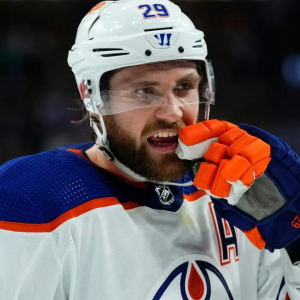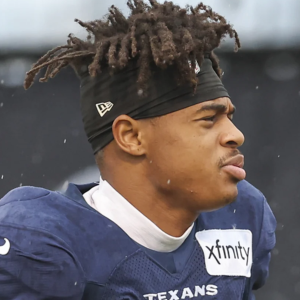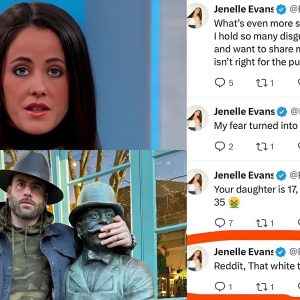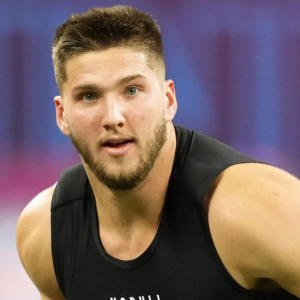Depending on when you’re reading these words, we’re still more than two months away from the 2024/25 NHL season, and about one month away from being reasonably able to get excited about it.
But, you know what, the 2023/24 campaign was so thrilling, we just can’t wait.
Like our intrepid leader David Quadrelli mentioned in the last edition of this series, we’re so jacked up on the potential of the year to come that we’re busting out our usual round of late-summer predictions now, in the period of time folks refer to as Midsommar.
And today we’ve got a prognostication for you that goes against the recent grain.
Prediction: Nils Höglander maintains his production in 2024/25
No bones about it, the 2023/24 season was a breakout campaign for the 23-year-old Höglander. He set new standards for games played (80), goals (24), and points (36). But, really, the real headline here was that goal total. Those 24 goals were fourth on the Canucks and tied for 90th overall in the NHL.
What’s more notable is that Höglander achieved those numbers while averaging just 12:06 in ice-time per game. His 1.58 goals-per-60, then, ranked third in the league amongst those players with a regular role, behind only Auston Matthews and Zach Hyman.
All in all, it was a pretty good year, and a pretty great goal-scoring year.
Which is why the most recent dialogue around Höglander has been a bit puzzling to this blogster.
The late signing of Daniel Sprong has, naturally, led to some discussion about the Vancouver Canucks having, perhaps, an excess of forwards on hand.
Elias Pettersson, JT Miller, Brock Boeser, Jake DeBrusk, Conor Garland, Dakota Joshua, Danton Heinen, Teddy Blueger, Pius Suter, Kiefer Sherwood, Nils Åman, Phil di Giuseppe, Vasily Podkolzin, Sprong, and Höglander are all under contract for next season. That’s 15 forwards already on a roster that normally carries 13.
If all that comes out of that is a couple of difficult cuts in camp, then so be it. But there are those who believe Sprong’s signing presages a trade, and specifically a trade of one of those extra forwards for a much-needed puck-moving defender. And the name most commonly thrown around as that extra forward in question has undoubtedly been Höglander’s.
Which, really, reveals a harsh truth about this fanbase and mediasphere and how they think about Höglander. Or, at least, Höglander’s ability to replicate what he did last season. The general belief seems to be that Höglander isn’t quite as good as those 24 goals last year would indicate, and that he’s not the kind of player who be counted on to produce such numbers on a consistent basis going forward.
But that’s just the general belief. It’s not shared by everybody, and it’s not shared by this author in particular. But we’ll get to that in a moment.
First, some commentary on the tide we are swimming against.
Höglander scored on 20% of his shots last season, about doubling his previous career shooting rate. An extremely high (or low) shooting percentage is typically the harbinger of a statistically anomalous season, with the basic idea being that sometimes players just get puck-lucky over a sustained period of time. And Höglander’s shooting percentage was extremely high. How high was it? It was the fourth-highest shooting percentage of any NHLer who scored 20 or more goals last season.
So, either Höglander continues to be one of the world’s most lethal snipers from here on out, or that shooting percentage is going to come down. Odds are pretty good it’ll be the latter. And when folks predict that some of the shine is going to come off Höglander next year, they’re basing that primarily on the shooting percentage – that, and a visually-apparent lack of chemistry with other forwards thus far.
But a decreased shooting percentage does not automatically equate to decreased production. And this is where we’re going to start pushing back on the Höglander narrative.
All of the other, underlying statistical indicators seem to say that Höglander’s offence was legitimate. He was among the Canucks’ leaders in Corsi (53.25%), Expected Goals (54.48%), control of scoring chances (54.36%), and especially high-danger chances (57.57%). Even with his low assist numbers, Höglander was the 35th-most-frequent point producer in the NHL at 5-on-5.
These numbers, as much as that shooting percentage, indicate an ability to maintain.
Of course, all statistics are fairly meaningless without context, which brings us back to ice-time. Höglander skated just 12:06 per night on average, and that’s incredibly low. How low? Try 344th overall among NHL forwards who played in 20 or more games last season.
Which raises the possibility that Höglander’s minutes were what folks call “sheltered.” Except they weren’t. Not really.
Höglander split his starts mostly evenly between the offensive and defensive zones. His quality of competition lagged a bit behind the league average, but then his quality of linemates ranked significantly lower.
All in all, Höglander played fairly average bottom-six minutes when deployed there, and fairly average top-six minutes when deployed there. No real sheltering at all.
Speaking of linemates, let’s get to that. There may still be a bit of a notion out there that Höglander benefitted from playing so frequently with Pettersson, though that’s a line of thought one heard less and less often as Pettersson’s own struggles unfolded. Either way, it doesn’t hold much statistical water.
Höglander basically scored at an equal rate no matter where he was playing or who he was playing with. His most frequent unit at 5-on-5 was actually a line with Miller and Boeser, where Höglander skated 13.2% of his even-strength minutes and notched 13.9% of his even-strength points. Conversely, he skated 8.5% of his even-strength minutes with Sam Lafferty and Anthony Beauvillier and scored 11.1% of his even-strength points with them. So if anyone was juicing Höglander’s numbers, it was Lafferty and Beauvillier, as we all suspected.
Honestly, as much as we hate to say it and don’t really believe it, the numbers say Pettersson didn’t really boost Höglander’s production much at all. Höglander played approximately 37.2% of his 5-on-5 minutes on a line with Pettersson last season and scored 16 of his 36 even-strength points during that time, or 44.4% (repeating, of course.)
Höglander played approximately 25.3% of his EV minutes on a line with Lafferty, and scored 10 of 36 points during that time, or 27.8%. Keep in mind, too, that Höglander and Lafferty would have been receiving bottom-six deployment during that time, contrasting with the top-six opportunity Höglander received alongside Pettersson.
Suffice it to say, then, that linemates, deployment, and placement had little effect on Höglander’s offence in 2023/24. But those things certainly could impact him in 2024/25, and in the positive sense.
Whatever the numbers say, the eye-test says that Höglander was one of the few forwards to show genuine chemistry with a going-through-it Pettersson late last year. That gives him the inside track to skate on one of Pettersson’s wings in 2024/25.
A new arrival that is penciled into the other side of that line is DeBrusk, a player who has averaged more than 20 goals and 20 assists across a full season schedule for his entire career. Many are predicting that Pettersson and DeBrusk are going to do wonders for each other’s numbers. If Höglander can work his way in to being the third wheel on that line, he should benefit in equal part.
DeBrusk should, at the very least, provide Höglander with more offensive set-ups and finishes than Ilya Mikheyev did last year.
Thus far, we’ve talked almost exclusively about external factors surrounding Höglander. But there’s plenty to be said about the internal factors, too. Höglander is a player with a very unique skillset. He’s a bowling ball with a low centre of gravity and the know-how to use that to his advantage, and a large portion of his 24 goals last season came as a result of him having placed himself in some really unique scoring positions.
That skillset doesn’t just go away, even if the pucks start to go in less frequently.
It’s really important to mention here that Höglander’s breakout year didn’t exactly come out of nowhere, either. Höglander scored 13 goals and 27 points in 56 games as an NHL rookie just two years after being drafted in the second round.
A couple of slumpy seasons followed, sure, but those were years in which most players at Höglander’s age and developmental level would not have even been in the NHL. Lo and behold, the organization made the right choice in 2022/23 to demote Höglander to Abbotsford for the bulk of the year, and he responded by getting his career right back on track.
Skip those in-between years, and look at Höglander as a player who scored 13 goals as a rookie and increased those numbers to 24 goals as a 23-year-old sophomore, and suddenly you’ve got a very different profile of a young forward on the rise. Which is what Höglander still is, despite the uneven path.
And that’s to say nothing of Höglander’s personal drive, which got him from the second round of the draft to NHL ice-time so quickly in the first place, and which is still apparent every time he steps on the ice.
Certain truths are fairly inescapable when it comes to guessing at 2024/25 Höglander. That shooting percentage is going to come down, yes. But both the ice-time and the quality of the ice-time should rise, so long as Höglander continues to look like a positive option alongside Pettersson and (presumably) DeBrusk.
Höglander only fired 120 shots on next last season. That number should rise. The shooting percentage goes down, the shot totals go up, and Höglander maintains.
And that’s about where we find ourselves as we wrap this piece up into a firm prediction. We wouldn’t be entirely surprised to see Höglander score fewer goals next year. A full two dozen is a lot in any year. But we believe he’ll avoid a total drop-off and end up in the same neighbourhood. And we’re willing to be the rest of his statline more than makes up for any missing markers.
In the end, that’s what we’re going to put down in the permanent record:
Nils Höglander will score around the same number of goals, greatly increase his assist totals, and see improvement in his overall point totals.
In other words, Höglander will maintain, or even increase, his production in 2024/25, despite the general belief being that he won’t.
This is a player who has been counted out before, and on numerous occasions. But perhaps this time will be the last time.





